THE GNOSTIC TRADITION AND RENAISSANCE OCCULTISM
By Thomas Molnar
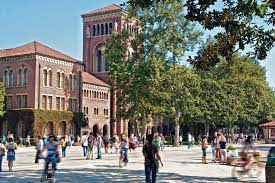 Modern scholarship has found that the stereotyped image we used to have of the Renaissance was considerably falsified by the retrospective view that educated Westerners were until recently casting on the fourteenth, fifteenth, and sixteenth centuries. It has become clear, thanks to such scholars as Hans Baron, Frances Yates, Oscar Kristeller, Eugenio Garin, and others, that the Renaissance did not only revive the memory and the monuments of Greece and Rome, but it also rediscovered the pagan myths which used to shape the inner life of the Hellenistic and Roman citizens. “Pagan myth” is not to be equated with
Modern scholarship has found that the stereotyped image we used to have of the Renaissance was considerably falsified by the retrospective view that educated Westerners were until recently casting on the fourteenth, fifteenth, and sixteenth centuries. It has become clear, thanks to such scholars as Hans Baron, Frances Yates, Oscar Kristeller, Eugenio Garin, and others, that the Renaissance did not only revive the memory and the monuments of Greece and Rome, but it also rediscovered the pagan myths which used to shape the inner life of the Hellenistic and Roman citizens. “Pagan myth” is not to be equated with 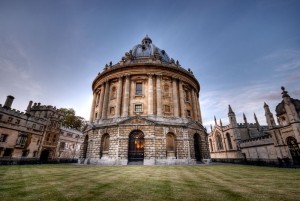 “mythology,” but with a plurality of currents of religious, spiritual, and esoteric inspiration whose origin goes back to prehistoric times and which took shape in Egypt, India, Mesopotamia, and Iran. This is not the place to explore their varied history and the combinations in which they entered with one another; we might mention only that singly and in combinations these currents had entered the Mediterranean basin around the beginning of the Hellenistic era, the third century B.C., and easily overcame the halfhearted resistance offered by the Roman pantheon.
“mythology,” but with a plurality of currents of religious, spiritual, and esoteric inspiration whose origin goes back to prehistoric times and which took shape in Egypt, India, Mesopotamia, and Iran. This is not the place to explore their varied history and the combinations in which they entered with one another; we might mention only that singly and in combinations these currents had entered the Mediterranean basin around the beginning of the Hellenistic era, the third century B.C., and easily overcame the halfhearted resistance offered by the Roman pantheon.
 It is a great miracle that, after permeating the minds of Greeks and Romans, these doctrines nonetheless yielded pride of place to Christianity. This is the more astonishing as the
It is a great miracle that, after permeating the minds of Greeks and Romans, these doctrines nonetheless yielded pride of place to Christianity. This is the more astonishing as the 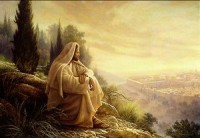 Christian doctrine, although it has firm roots in Judaism and in Greek speculation, is difficult to bear because it opposes so clearly the spontaneous bent of the archaic mind which predominated in most parts of the world and which threatens to prevail once more in our time. I refer to the Hebrew-Christian concept of separating God and man as Creator and created, of not confusing their natures, their persons, their powers. In practically all other religious and para-religious doctrines and systems, the temptation is not resisted to identify God and self, to recognize in the soul a divine substance, indeed the seat of divinity. Man is struck by the duality of body and soul, matter and spirit, and since he is greatly impressed by his own superiority over the rest of the visible and thinkable universe, by the consciousness he alone seems to possess, he easily persuades himself of a radical duality: man is one with the spiritual principle, God, while everything else is below him, immersed in the depth of materiality and existential misery. This central theme has, of course, many varieties, but all of them display the belief that man himself, so vastly different from the surrounding world perceived through the senses, can only be of a divine essence, not a creature himself, first among, but nevertheless only one of, the creatures. What I meant by saying that Christianity is hard to bear, becomes thus clarified: insertion in the hierarchy of creation, acceptance of a role assigned by the Creator, above the rest of other creatures, yet definitively and distinctly not divine.
Christian doctrine, although it has firm roots in Judaism and in Greek speculation, is difficult to bear because it opposes so clearly the spontaneous bent of the archaic mind which predominated in most parts of the world and which threatens to prevail once more in our time. I refer to the Hebrew-Christian concept of separating God and man as Creator and created, of not confusing their natures, their persons, their powers. In practically all other religious and para-religious doctrines and systems, the temptation is not resisted to identify God and self, to recognize in the soul a divine substance, indeed the seat of divinity. Man is struck by the duality of body and soul, matter and spirit, and since he is greatly impressed by his own superiority over the rest of the visible and thinkable universe, by the consciousness he alone seems to possess, he easily persuades himself of a radical duality: man is one with the spiritual principle, God, while everything else is below him, immersed in the depth of materiality and existential misery. This central theme has, of course, many varieties, but all of them display the belief that man himself, so vastly different from the surrounding world perceived through the senses, can only be of a divine essence, not a creature himself, first among, but nevertheless only one of, the creatures. What I meant by saying that Christianity is hard to bear, becomes thus clarified: insertion in the hierarchy of creation, acceptance of a role assigned by the Creator, above the rest of other creatures, yet definitively and distinctly not divine.
 As said before, the triumph of Christianity had pushed back the Eastern doctrines from the fifth-century on — after a gigantic struggle against them — against their formulations in Greek philosophical language. These were the doctrines to which we refer generally as heresies. Yet, the church’s victory does not mean that these heresies were extirpated, only that they went “underground” and reappeared afterwards in various disguises: incorporated in quasi-official teaching, in marginal propositions, in rejected theses, and, finally, in a corpus of esoteric documents passed on by one generation to another. Such a body of teaching was, for example, the Jewish Cabala which claimed a tradition going back to the Jews’ captivity in Babylon where they had supposedly studied the Brahmanic texts of India, and, later, the Persian spirituality. Another tradition surfaced much later, in the seventeenth century, known as the Rosicrucian teaching, which claimed a long lineage of sources: Egypt, the Eleusian mysteries, the Persian magi, the Pythagoreans of Graecia Magna, and the wise men of Arabia. A yet later esoteric doctrine, Freemasonry, mentioned as its origin the alleged Egyptian mysteries of Pharaoh Tutmes III, four thousand years before Christ. In addition, there circulated in the Middle Ages a variety of manuscripts on astrology, claiming to have preserved the secret names of gods (spirits) from earliest antiquity. These astrological secrets blended with the work of the alchemists, particularly active in the late Middle Ages and in the Renaissance centuries, and whose tradition is as old as the earliest mining and metallurgical activities of men, whether in Greece, China, or Africa.
As said before, the triumph of Christianity had pushed back the Eastern doctrines from the fifth-century on — after a gigantic struggle against them — against their formulations in Greek philosophical language. These were the doctrines to which we refer generally as heresies. Yet, the church’s victory does not mean that these heresies were extirpated, only that they went “underground” and reappeared afterwards in various disguises: incorporated in quasi-official teaching, in marginal propositions, in rejected theses, and, finally, in a corpus of esoteric documents passed on by one generation to another. Such a body of teaching was, for example, the Jewish Cabala which claimed a tradition going back to the Jews’ captivity in Babylon where they had supposedly studied the Brahmanic texts of India, and, later, the Persian spirituality. Another tradition surfaced much later, in the seventeenth century, known as the Rosicrucian teaching, which claimed a long lineage of sources: Egypt, the Eleusian mysteries, the Persian magi, the Pythagoreans of Graecia Magna, and the wise men of Arabia. A yet later esoteric doctrine, Freemasonry, mentioned as its origin the alleged Egyptian mysteries of Pharaoh Tutmes III, four thousand years before Christ. In addition, there circulated in the Middle Ages a variety of manuscripts on astrology, claiming to have preserved the secret names of gods (spirits) from earliest antiquity. These astrological secrets blended with the work of the alchemists, particularly active in the late Middle Ages and in the Renaissance centuries, and whose tradition is as old as the earliest mining and metallurgical activities of men, whether in Greece, China, or Africa.
These esoteric teachings are intimately related. As late as the eighteenth century, it was known that most freemasons were also alchemists; the works of Swiss psychologist, C. G. Jung, show that alchemical speculation is present in the deepest layers of the human psyche—namely in the form of symbols conveying to man meanings which cut across centuries and civilizations. The Oxford historian of Oriental religions, R. C. Zaehner, showed recently the link between Brahmanic speculation, the practice of Zen, and the beliefs of the “Manson-family” of the famous murder case in California. Another historian of religion, Mircea Eliade, demonstrates in numerous writings that the alchemists’ preoccupation with the “life” of metal, its passion, death, and resurrection (transfiguration), parallels the same events in the life of Christ, as we can see when we note in alchemical texts that gold for them is less the metal as we know it, than a symbol, or rather the incarnation of light.
Today we can safely assert that the Renaissance was the time when all these esoteric doctrines first presented themselves to Western man in the daylight of open speculation, that is, without efforts on the part of the church to suppress them. In this sense we may even say that the Renaissance is that period in Western intellectual history when the first serious attempt was conducted against the Christian concept of God, men, and creation, by those doctrines which are incompatible with it, but which had been resisted for more than a millenary, from Clement and Irenaeus, through St. Augustine and Athanasius, to Thomas Aquinas. We must, however, be careful to distinguish among the Renaissance currents. Philosophically speaking, orthodox Christian doctrine, from Augustine to Thomas, represents the victory of rational speculation—a thin and ever-threatened line—over a mostly radical mysticism whose characteristic sign was and is that it denies the distinction of God and man, self and totality, object and subject, conceptual thought and enthusiasm, etc. In the heyday of scholasticism (thirteenth century) the victory of orthodoxy was also that of Aristotle, whose balanced rational outlook, integrated (by St. Thomas) with basic Christian doctrine, was able to neutralize the two kinds of assaults
directed against scholasticism: the revived later-Greek systems of Stoicism and Epicureanism, on the one hand, and the hermetic-occult teachings, on the other hand. Aristotelianism remained official university teaching even after the Renaissance, not because attacks against it did not multiply and grow, but because Renaissance conceptual turmoil was unable to distill anything systematic and coherent with which to replace it. Only towards the end of the seventeenth century did the scientific view acquire enough authority to penetrate academic life and remove the last remnants of Aristotelian scholasticism.
Underneath the continued Aristotelianism of the universities, the occult systems had a relatively easy way of penetrating the intellectual circles of Renaissance Europe, beginning, of course, with Italy, whose south (Sicily included) had been almost uninterruptedly exposed to Byzantine (Greek), Syrian, and Arab influence. Viewed from this angle, the Renaissance appears to us in a new light: as a synthesis of Christian, Hebrew, Greek, and occult doctrines, and some of the Renaissance heroes as rather confused intellects, standing at the crossroads of contradictory idea-systems. Before mentioning some by name—and situating them elsewhere than what is their consecrated place in our textbooks—let us describe the corpus of esoteric doctrines as it was handed down from ancient times to the Renaissance scholar.
The first period of flowering of esoterism can be put to the second and third centuries A.D., when the oriental doctrines penetrated the Roman Empire. By this time, the Augustan “restoration” was exhausted, and from then on, the Roman world was to be a battlefield of doctrines and ideologies. From Egypt (?), the teachings of the mythical Hermes Trismegistes (thrice-great) proposed a kind of super-religion, older and truer than that of Moses and Christ, the religion of a god of mysteries. Salvation consisted in the knowledge (gnosis) which recognized the self as a part of the divine intellect, of which not everybody, only an elite, partakes. Thus the true doctrine is the secret of a few initiates—a pattern we find in each of the occult doctrines: the division of men into elect, magi, gnostikoi, alchemists, on the one hand, and masses, profane ones, divided ones, material ones, on the other. The French scholar, A. J. Festugière, describes the Gnostic initiate as attributing his personal suffering (“alientation” according to the contemporary Greek term, allogenes, that is, born elsewhere, belonging elsewhere) to the radical evil of the world from which he tries to escape; in contrast, the Greek sage, writes Festugière, takes pleasure in the world’s orderliness (kosmos) and finds his modest place in it even though he too is subject to the human condition.
Thus the first thing about the occult doctrines is that their adepts regard the universe as evil, and they view their own function as refugees from it or destroyers of it. My real self, the esoteric adept holds, is part of God, divine; what remains, my body and its passions, is of no consequence, it can be suppressed, or, on the contrary, it may be given full freedom since in that case its evil behavior does not involve me, my real self. The adept of occultism is not a human being in the same sense as the others, for he bears a higher element, he is not in a “conditioned state” (writes the contemporary esoteric, René Guénon), and he is only that part of himself which is of a divine essence. I am, said the Arab mystic Abu Mansur el-Helladj (tenth century), a divine hypostasis, an incarnation of God. Later, in the sixteenth century, Caspar Schwenckfeld asserted that Christ is born in every man and that instead of salvation (the soul going to God and contemplating his glory), there is divinization, theosis; man becomes God, since the two are anyway indistinguishable.
These are, in the form of an abridged exposé, the main tenets of esoterism. An equally important part is the one which describes the techniques of escaping from the (material) world, the art (magic art) of securing for the spirit its homecoming to God. Esoterism speaks of the spirit (pneuma), not of the soul (psyche); the latter is “soiled” by all the material and passionate things that happen to man while he is immersed in profane existence, whereas the spirit is what is pure and untouched in him, the truly divine part. The esoteric technique is then the art of liberating the spirit from its material and psychic envelopes, the way of ascending to the One, the art of commending to the forces of the universe which is the adept’s prerogative. How does the adept reach perfection? Principally, by abolishing the multiplicity of which the world of appearances consists, and by joining them in a fused unity. Multiplicity itself is reducible to the two opposites of existence: the male and female principles which should be joined in the androgynous figure. These two poles of existence are found in such elements as sulfur and mercury, in the heavenly and the earthly, in the sponsus (Christ) and the sponsa (church). The objective is to restore their unity and thereby abolish those contrasts which keep the world going through the instrumentality of struggle and conflict (conjunctio oppositorum). Only when the world will cease to be agitated, and finally to exist, when multiplicity will be reabsorbed in the One (a Western version of the Buddhist nirvana?), will the esoteric himself come to rest. These ideas struck the Renaissance mind with a tremendous impact. These minds, for one thing, were deeply permeated by the age-old symbols inherited from countless generations, symbols which had traditionally found their way into literature, art, science, medicine, religion, and every act of life. The Renaissance man still lived in a sacralized world in which things carried a meaning, were animated by sacred forces, and were equivalently expressed by myth and by science.
Art itself was not so much an object of enjoyment as a means among many of influencing the world—just as plants, for example, were not grouped in botanical categories but were playing specific roles in a universe of correspondences. The rediscovery of hermetric documents—Poimander, Picatrix, Adocentyn, the conversations of Hermes with his son, Tat, the Cabala, the Zohar, the astrological treatises—were as important for the Renaissance mind as the rediscovery of Plato’s dialogues and the complete texts of dozens of Greek and Roman writers.
At the end of the fifteenth century, Pico della Mirandola explained that the new knowledge obtained from magic, the secret arts, the Cabala, etc., prove the divinity of Christ better than the conventional documents, the Bible, and the Gospels. This statement meant, of course, that the latter needed confirmation from documents still more ancient which dated supposedly from time immemorial, from the “sages of Egypt.” What the Renaissance scholar meant by universal knowledge, was, consequently, the mastery of occult art hitherto not available to Christians, an art consisting of knowledge but also of manipulation. The magic art now placed in the hands of the Renaissance scholar was the equivalent of technology placed at the disposal of twentieth-century intellectuals: both thought that the world might be thereby transformed in its substance.
For Cornelius Agrippa of Nettesheim, a German “humanist,” magic was the natural consequence of cosmic unity. The art permits our ascent to the “original world” because the dogma held that “what is above is equal to what is below” and the two worlds may be reciprocally influenced through the magus. The magus acquires his status by ascending to the celestial sphere so as to be in a position to manipulate, give orders to, the sub-celestial things. For this purpose, the magus possesses talismans, magic objects, statues of spirits and divinities which, when suitably manipulated (like, for example, the Golem in Jewish Renaissance mysticism), confer upon the magus extraordinary powers, ultimately the powers of transforming the world. When this happens, wrote Giordano Bruno, another Renaissance humanist, the Egyptian religion will again prevail (over Christianity).
The nature of the magic object was studied with understandable care. Here the alchemists were in the forefront of the search. All modern students of alchemy (Eliade, Silberer, T. Burckhardt) agree that the objective was not gold but the prima materia, the original matter, the philosopher’s stone which would be a fusion of opposites, able to bring about the “chemical marriage” (of sulfur and mercury) and produce a substantia coelestis, a heavenly substance, itself the supreme talisman since it combines the two spheres. The Christ, Himself regarded as a fusion of the divine and the human, was merely one of the forms of the Original Man (the Adam Kadmon of the Cabala), a microcosm of creation, symbolized in many ways, among them as a complete sphere or an egg (symmetry), or the ecclesia spiritualis, in contrast to the worldly, material church of Rome. The Original Man was, of course, neither male nor female, it was an androgynous figure possessing double sex characteristics and eventually two heads, one male, one female. (The same is true of the tantric symbols, of Tibetan and Chinese symbols,
etc.). The Philosopher’s Stone, the Original Man, the Androgyne, and the Sphere were expressions of totality, and as such, symbols of a finally abolished multiplicity, symbols of the Whole and at the same time of Nothingness. Another sign, used later, is the perfect square surmounted by a cross, signifying tamed matter, the spiritualized world.
All this was not specifically the product of Renaissance speculation, although, quite understandably, the various currents so far mentioned could not converge before the weakened Christian faith and weakened doctrinal defense allowed them to surface as freely as they now did. It seems that the Renaissance made one important contribution to esoterism, the concept of the community itself as a “talisman,” a kind of philosopher’s stone on a large scale, the city regarded as the Original Man of vast proportions. Humanists like Bruno, Campanella, Andreae, and others laid out in their writings the “ideal city”—not as an urban project actually to be built, but as the final symbol for man’s divinization. The many “utopias” (not excluding More’s own) were sub-celestial images of the celestial spheres, with God, “the Great Metaphysician,” as king. Within the city, the Rosicrucians asserted, there will be universal harmony, a new language, and spiritual fusion with God. Let us bear in mind that Pico della Mirandola also found the “dignity of man” (in his famous discourse still regarded as the chief document of humanism) in his ability to synthesize heaven and earth so as to control his own destiny. Campanella’s City of the Sun was to be in contact with the cosmos inasmuch as it was the incarnation of man, an artificial heaven. Paracelsus, another famous magus, promised a “new age of singing, dancing and jubilation” by the year 1600. Utopia was not the ideal city on account of its better laws and more durable institutions, but because it was a kind of gigantic lapis philosophorum, the juncture of heaven and earth, the place where man becomes divine.
Let us draw a few conclusions from the above discussion. We saw that the terms “renaissance” and “humanism” are not necessarily terms of praise, clarity, and ideality; but much more complex than to be compressible in one—positive—category. “Renaissance” was also the revival of ugly, idolatrous, and often obscene creeds, and “humanism” may mean just what it says: the adoration of man and his occult powers to create the world and himself. Of the magic ascent of Bruno, Agrippa, and others one may say what R. C. Zaehner recently wrote about Charles Manson’s “trip”: “Where he had been all things were One, and there was no diversity at all. He had passed beyond good and evil. At last he was free.”
The second conclusion is that the fashion of the occult is not a mere harmless fad from which merchants of books, movies, songs, and festivals may reap ample profit; it is the sign of cultural confusion, of the distention of social ties, each member of the cult doing his own thing, making his own “ascent” to his own heaven, falling into his own abyss.
Thirdly and most importantly, occultism is an unmistakable sign that reason is downgraded, and with it conceptual thinking, logic, rationality. Saying this, I do not mean, in my turn, to downgrade all mental categories other than reason. A civilization would be dreadfully impoverished if it made no room for mysticism, fantasy, imagination, and the irrational. It would not be a civilization at all. But it should be clear from this study that the occult denies reason and reason’s function to be the ultimate arbiter of all things man strives to comprehend. Occultism does not do this by attacking reason directly, but by resorting to instruments (talismans, magic statues, signs, formulas, utopias, etc.) which, the occult adept holds, will transform man’s creaturely state (status creaturae) into a divine state. The result will be, as Festugière remarks, moral aberration (to a divine being all things are possible and permitted) and also intellectual aberration, the loss of proportions in things human, divine, scientific, cultural, social, and political.
In this manner a strange alliance is concluded between the occult and the rationalistic (as opposed to the rational, the reasonable). Since the magus has solved the riddle of the universe, and more, he has changed the universe into what he wanted it to be (abolition of good and evil, fusion of opposites, and so on), he has gained a suprarational power, a vantage point where he usurps the right of deciding the real and the unreal, being and nonbeing. Clinically, all kinds of diagnoses might apply; less scientifically, let us say only that such attitudes, indeed such ambitions, point to the sickness of the soul which tears itself away from being and its eternal laws.
*****
Article from www.chalcedon.edu




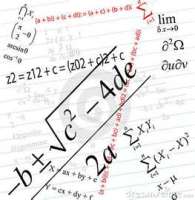
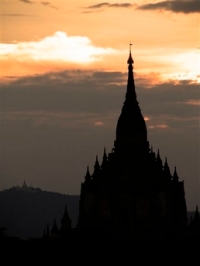

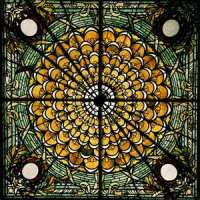
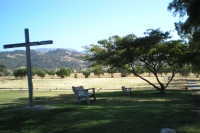


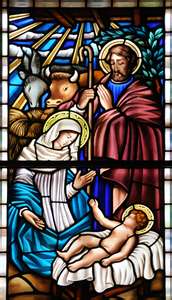
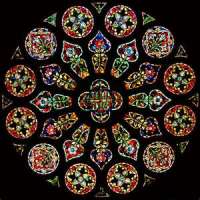



Reblogged this on Catholic Kulchur.